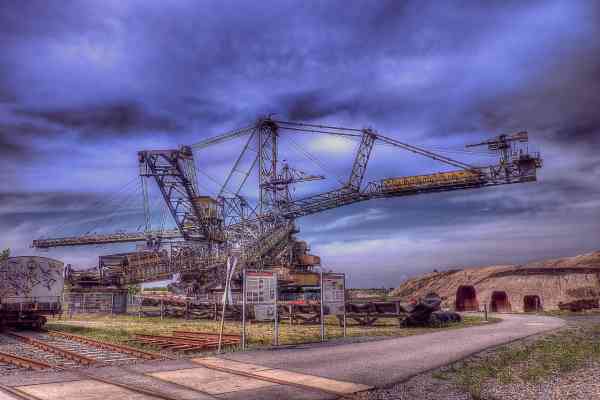September 23rd, 2020 | 11:14 CEST
Varta, United Internet, SolGold: Future copper scarcity is becoming apparent
A study commissioned by the International Copper Association (ICA) shows that by 2030 more than 250,000 tonnes of copper per year will be used as part of the windings in electric motors for all types of vehicles. Added to this is the long-established copper requirement in all conventional electrical appliances, electricity storage systems, generators and, last but not least, in construction, where the patina of roof and rain pipe structures is concerned. Copper is ubiquitous and yet one of the rarest metals on this globe. Current production is around 20 million tonnes of copper per year but is tending to decline by 5% per year due to mine exploitation and closures. South America is the largest copper producer in the world. According to official resource estimates, about 40% of the total copper deposits worldwide are in South and Central America, especially in Chile. The spot price of the rare metal has risen by a staggering 55% since the corona collapse in March and recently reached a new annual high.
time to read: 3 minutes
|
Author:
André Will-Laudien
ISIN:
DE000A0TGJ55 , DE0005089031 , GB00B0WD0R35
Table of contents:

"[...] If we pursue our goals conscientiously, the market will adjust its valuation accordingly, I am sure. Often, all it takes is a trigger. [...]" Ryan McDermott, CEO, Phoenix Copper
Author
André Will-Laudien
Born in Munich, he first studied economics and graduated in business administration at the Ludwig-Maximilians-University in 1995. As he was involved with the stock market at a very early stage, he now has more than 30 years of experience in the capital markets.
Tag cloud
Shares cloud
The trend towards decentralized energy supply gives battery manufacturers wings
The shares of the battery manufacturer Varta, based in Ellwangen, Baden-Württemberg, are currently showing strong performance, even though Varta has to pay the increased raw material prices for its power storage applications. At the end of August, Varta's share price reached a high of EUR 130.50, which is double the price at the beginning of March. The reason for the sharp rise is excellent figures.
Group sales of between EUR 780 and 800 million are expected for 2020. This corresponds to a sales growth between 115% and 120% compared to the previous year. Organic sales growth should be between 32% and 38%. Adjusted Group EBITDA is expected to be in a corridor between EUR 175 million and EUR 185 million in 2020, representing a year-on-year increase of 79% to 90%.
Varta continues to see no losses due to the pandemic. On the contrary: the strong increase in people working from home and the resulting decentralized energy demand in the form of rechargeable batteries and battery storage units will lead to unique developments at Varta. The share price has reflected the supportive business environment well so far.
The partnership with Telefónica causes difficulties
The Internet and telecommunications group United Internet and its mobile subsidiary 1&1 Drillisch have lost more than 25% in value since Monday morning. The reason was the higher price demands of the partner Telefónica Deutschland for the use of the former E-Plus/O2 network. The agreement between United Internet, its mobile communications subsidiaries, and Telefónica, were once a condition for the approval of the merger of E-Plus and O2 by the cartel authorities.
Although the overall profit will only decrease by 6%, the downward price movement is significant. United Internet has been in great demand on the stock exchange in recent months and has already gained over 30% this year. The COVID pandemic has made investors jump on service providers around telecommunications and the Internet, as network usage has grown greatly, also due to streaming services.
Again a scarcity topic leads to public discussions in net-weak Germany again and again. For a broadband expansion of the networks in Germany, a lot of copper is required, because the nationwide supply of fibre optics will still be a long time coming. Thus, every infrastructure issue and the widely propagated digitalisation automatically triggers demand for the upstream raw materials industry.
Copper and gold deposits in Ecuador
The copper concessions of SolGold Plc, an Australian-based copper and gold exploration company, are not in short supply. The company is focused primarily on the North Andean Copper Belt resources in Ecuador, where it has several sections of continuous copper and gold deposits forming its main Cascabel project.
It also has assets in the Solomon Islands and Australia. The company's Cascabel project is a porphyry copper-gold deposit located in the province of Imbabura in northwest Ecuador. A comprehensive, nationwide study has recently been carried out by independent experts to assess the project's topographical, geological and chemical data. The resulting conclusion is the mineralization is classified as "significant" and the geological potential for mining is also well established.
In response to this study, the company initially established and financed four new subsidiaries in Ecuador, namely Carnegie Ridge Resources S.A., Green Rock Resources S.A., Cruz del Sol S.A., and Valle Rico Resources S.A. These subsidiaries currently hold 72 mineral concessions in a local area of approximately 3,200 square kilometres. The parent company, Exploraciones Novomining S.A. based in Ecuador, holds all of the Cascabel concessions and is owned by SolGold (85%) and Cornerstone (15%). Due to the good capitalisation of the participating companies, we expect copper production to start soon.
In connection with the scenario described above, SolGold is favorably valued at approximately EUR 582 million compared to large copper producers such as Rio Tinto or BHP Billiton. Given the size of the copper projects alone, gold activities are almost a gift. At the end of June 2020, there was still around USD 46 million in the cash box and attempts were also being made to take over the competitor, Cornerstone Capital Resources.
In our opinion, it is worth taking a speculative look at SolGold's copper projects; 21.7 million ounces of gold and 92.2 million ounces of silver are still being produced. The timing of the investment fits perfectly with the commodity revaluation that has been reflected in market prices since March 2020. Although the SolGold price of the shares listed in London, Toronto and Frankfurt has doubled since March, SolGold's strong operational performance is still in its infancy.
Conflict of interest
Pursuant to §85 of the German Securities Trading Act (WpHG), we point out that Apaton Finance GmbH as well as partners, authors or employees of Apaton Finance GmbH (hereinafter referred to as "Relevant Persons") may in the future hold shares or other financial instruments of the mentioned companies or will bet on rising or falling on rising or falling prices and therefore a conflict of interest may arise in the future. conflict of interest may arise in the future. The Relevant Persons reserve the shares or other financial instruments of the company at any time (hereinafter referred to as the company at any time (hereinafter referred to as a "Transaction"). "Transaction"). Transactions may under certain circumstances influence the respective price of the shares or other financial instruments of the of the Company.
Furthermore, Apaton Finance GmbH reserves the right to enter into future relationships with the company or with third parties in relation to reports on the company. with regard to reports on the company, which are published within the scope of the Apaton Finance GmbH as well as in the social media, on partner sites or in e-mails, on partner sites or in e-mails. The above references to existing conflicts of interest apply apply to all types and forms of publication used by Apaton Finance GmbH uses for publications on companies.
Risk notice
Apaton Finance GmbH offers editors, agencies and companies the opportunity to publish commentaries, interviews, summaries, news and etc. on news.financial. These contents serve information for readers and does not constitute a call to action or recommendations, neither explicitly nor implicitly. implicitly, they are to be understood as an assurance of possible price be understood. The contents do not replace individual professional investment advice and do not constitute an offer to sell the share(s) offer to sell the share(s) or other financial instrument(s) in question, nor is it an nor an invitation to buy or sell such.
The content is expressly not a financial analysis, but rather financial analysis, but rather journalistic or advertising texts. Readers or users who make investment decisions or carry out transactions on the basis decisions or transactions on the basis of the information provided here act completely at their own risk. There is no contractual relationship between between Apaton Finance GmbH and its readers or the users of its offers. users of its offers, as our information only refers to the company and not to the company, but not to the investment decision of the reader or user. or user.
The acquisition of financial instruments entails high risks that can lead to the total loss of the capital invested. The information published by Apaton Finance GmbH and its authors are based on careful research on careful research, nevertheless no liability for financial losses financial losses or a content guarantee for topicality, correctness, adequacy and completeness of the contents offered here. contents offered here. Please also note our Terms of use.




